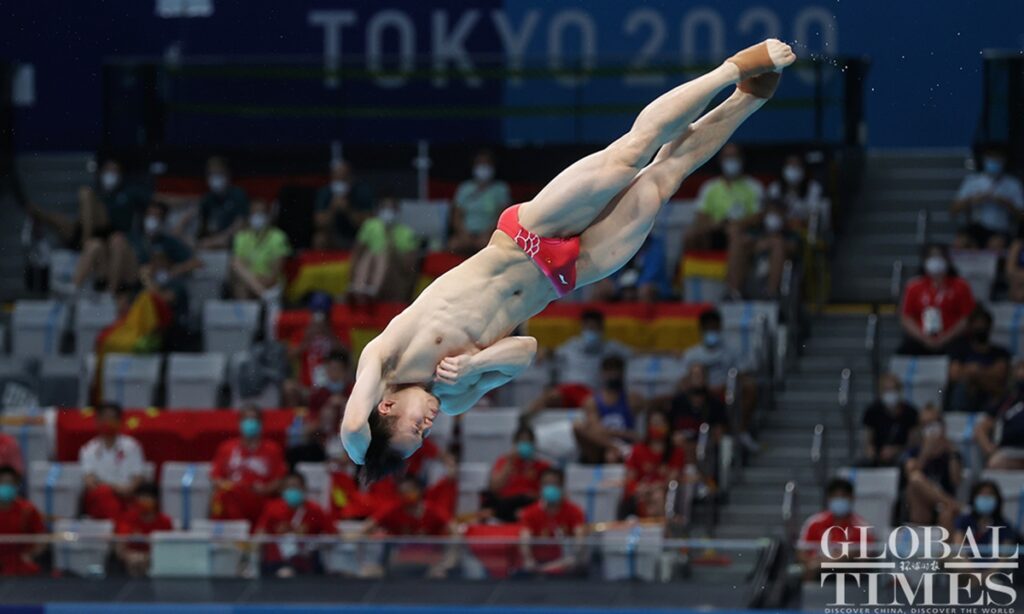Following Team China’s medal harvest and memorable performances at the Tokyo Olympics, the high technologies that powered their success have become a hot topic among Chinese netizens in recent days.
According to a report by CCTV on Tuesday, China’s national diving team has long benefitted from advanced 3-D and AI technology.
“Diving is a high-speed sport; from the jump to the water takes only two seconds, but the athletes’ movement in the air is very complex,” the CCTV report said. “How to accurately analyze the divers’ in-air movement is a major challenge in the training process.”
“The athlete’s movements are framed on a three-dimensional spatial display map through this technology, which can show various details of the movements, and the coach can then provide quantitative guidance for the athlete’s movement,” said the system’s development engineer.
The diving team won seven gold medals and five silver medals at the Olympics, making it one of the most successful teams in the Chinese delegation.
“Through technology, it is possible to quantify the experience and patterns that are normally transmitted by word of mouth by athletes, bringing more accurate scientific guidance,” the engineer said.
Another robotic coaching system, Pangbot M-ONE for table tennis, which debuted in April 2020, can help adjust the speed and spin of the ball for different players, while producing and analyzing players’ practice data to help improve performance. It was co-developed by the China Table Tennis College of Shanghai University of Sport and Siasun Robot & Automation Co.
Aerospace technologies are also applied to help the athletes. During the preparation period of the Chinese swimming team for the Olympics, the China Academy of Aerospace Electronics Technology (CAAET) carried out tests on six world swimming champions using aerospace measurement equipment. Data was also gained through simulation training, which helped in developing scientific training plans for athletes and provided scientific support for improving their performances, according to the Sina Weibo account of China Aerospace Science and Technology Corporation (CASC), the parent of CAAET.
The athletes’ sportswear was another area involving high technology. The shoes and sportswear of men’s 81-kilogram weightlifting gold medalist Lü Xiaojun have generated a lot of discussion.
Leveraging multiple technologies, the sneakers are stress resistant to more than one ton of weight and are shock resistant. The sole uses super wear-resisting fiber, which is 2.5 times more resistant than normal materials, bringing extremely strong ground grasping performance, according to Anta’s official WeChat account.
The development of modern technology is an important step for the progress of athletes’ performance, Wang Dazhao, a Beijing-based veteran sports commentator, told the Global Times on Tuesday.
Wang also noted that advances in technological tools in the field of sports should be open and shared on a global scale.
“Advances in sports science and technology are the common wealth of mankind and should not be linked to national scientific and technological security,” Wang said. “At present, technological breakthroughs made by countries in the field of sports also tend to roll-out globally in a short period.”
Photo: Cui Meng/Global Times


